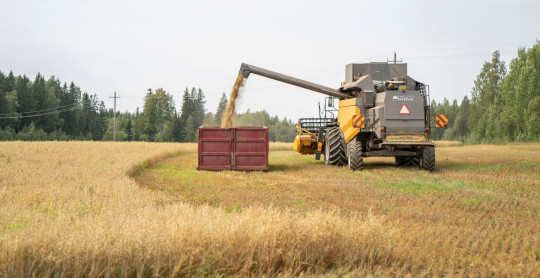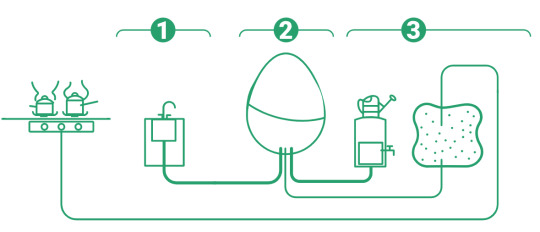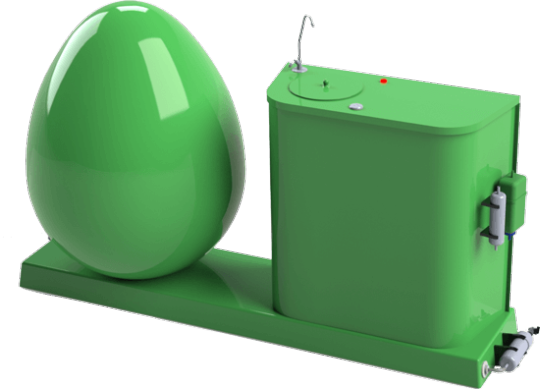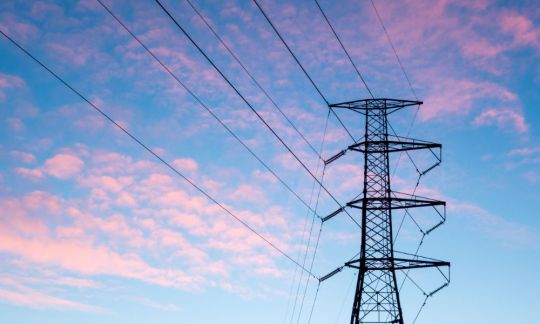#Biogas systems
Explore tagged Tumblr posts
Text

Our BIO Pallets provide a sustainable and efficient energy source for various industrial processes. Made from organic materials, they offer a cleaner alternative to conventional fuels. Learn about our BIO Pallets at greenlifeindia.co.
#Renewable energy solutions#Biogas production#Methane energy#Biofuel technology#Sustainable energy alternatives#Clean energy generation#Renewable energy innovations#Biogas systems#Renewable energy companies in India#Green energy solutions#Affordable biogas solutions in India#Methane production services for Indian industries#Sustainable biofuel providers in India#Renewable energy alternatives for Indian businesses#Biogas plant installation services in India#Eco-friendly energy solutions for Indian agriculture#Industrial waste-to-energy solutions in India#Customized biogas systems for Indian farms#Renewable energy consulting services in India#Biogas technology providers in India#mlmleaders
0 notes
Text
High-Quality Biogas Digesters by Coepenviro Tanks
Coepenviro Tanks is a leading provider of Glass-Fused-to-Steel (GFS) Tanks, offering top-notch solutions for various industrial and environmental needs. Among our innovative products are biogas digesters designed for sustainable energy production, combining durability, efficiency, and eco-friendliness.
Glass-Fused-to-Steel Tanks for Biogas Digesters
Our Glass-Fused-to-Steel Tanks are engineered with precision to ensure optimal performance in biogas production. The glass coating provides excellent resistance to corrosion, making these tanks ideal for handling aggressive substances. Whether you require a ZnAl steel tank for robust construction or steel bolted tanks for easy installation, our solutions are tailored to meet diverse requirements.
Applications of GFS Tanks
Rainwater Harvesting: Our GLS Tanks for Rainwater Harvesting are perfect for storing harvested rainwater, offering a sustainable water storage solution.
Wastewater Management: Coepenviro’s wastewater tanks are designed to handle industrial and municipal wastewater with high efficiency and reliability.
Fire Protection: We offer Fire Protection GFS Tanks that comply with safety standards, ensuring reliable fire suppression systems.
Potable Water Storage: For clean and safe drinking water storage, our Potable Water Storage GLS Tanks are the ideal choice.
Advantages of Coepenviro Tanks
Durability: With a glass-fused coating, our tanks resist corrosion and wear, ensuring longevity.
Easy Installation: Our steel bolted tanks are prefabricated and easy to assemble, saving time and labor costs.
Versatility: Suitable for multiple applications, including biogas storage, industrial use, and potable water storage.
Global Reach: We are not only GFS Tank Suppliers in India but also cater to clients worldwide, including Glass-Fused-to-Steel Tanks in Kenya.
Why Choose Coepenviro Tanks?
As a leading bolted tank supplier, we take pride in delivering high-quality bolted tanks that meet international standards. Our products are widely recognized for their robust design, innovative features, and cost-effectiveness. Whether you need steel-coated tanks for industrial storage or specialized industrial storage tanks for biogas digesters, Coepenviro is your trusted partner.
Conclusion
Coepenviro Tanks stands out as a premier provider of Glass-Fused-to-Steel Tanks and related storage solutions. From wastewater tanks to fire protection GFS tanks, our extensive range of products addresses diverse industrial and environmental needs. For high-quality biogas digesters and other tank solutions, trust Coepenviro’s expertise and commitment to excellence.
#Biogas Digester in India#Anaerobic Storage#Customized GFS Tank#Agricultural Biogas Plant#Biomass Digester#Bio-Digester Tank#Biogas Production System#Anaerobic Digester#Coep Enviro biogas project#Industrial Biogas Digester
0 notes
Text
Hydrogen Sulfide Scrubber for Biogas
AtmosPower is a leading hydrogen sulfide scrubber unit provider in India. Our highly advanced biogas scrubber helps you to remove impurities of the biogas and upgrade raw biogas to the product gas standards quality by using biogas cleaning systems.
1 note
·
View note
Text
Jamshedpur Aims to Convert All Food Waste into Biogas by 2026
Tata Steel UISL unveils ambitious plan for sustainable waste management in the city. Tata Steel UISL’s initiative to transform Jamshedpur’s food waste into biogas marks a significant step towards eco-friendly urban management. JAMSHEDPUR – A groundbreaking waste management plan aims to convert all of Jamshedpur’s food waste into biogas within two years. Ritu Raj Sinha, Managing Director of Tata…
#बिजनेस#biogas conversion in hotels#business#eco-friendly waste solutions#food waste management#Jamshedpur biogas project#Jamshedpur environmental conservation#KSMS biogas system#Ritu Raj Sinha#sustainable urban development#Tata Steel UISL initiative#urban waste reduction strategies
0 notes
Text
https://www.htfmarketintelligence.com/report/global-biogas-flare-system-market
0 notes
Text
https://www.htfmarketintelligence.com/report/global-biogas-flare-system-market
0 notes
Text
"India has reached a key milestone in renewable energy, with the country’s total renewable energy capacity exceeding 200 gigawatts as of Oct. 10, 2024, according to the Central Electricity Authority. The renewable energy-based electricity generation capacity now stands at 201.45 GW, accounting for 46.3% of the nation’s total installed capacity.
This milestone is the result of years of efforts to harness India’s natural resources. From solar parks to wind farms and hydroelectric projects, the country has built a diverse renewable energy base, reducing fossil fuel dependence and enhancing energy security.
India's total electricity generation capacity has reached 452.69 GW, with renewable energy contributing a significant portion of the overall power mix as the country continued to increase its dependence on cleaner, non-fossil fuel energy sources and push towards its sustainability goals.
When factoring in the 8,180 MW of nuclear capacity, the total non-fossil fuel-based power now accounts for almost half of the country's installed electricity generation capacity, signalling a strong move towards clean energy leadership on the global stage.
Renewable Energy
A variety of renewable energy resources contribute to this impressive figure. Solar power leads the way with 90.76 GW, playing a crucial role in India’s efforts to harness its abundant sunlight. Wind power follows closely with 47.36 GW, driven by the vast potential of the coastal and inland wind corridors across the country.
Hydroelectric power is another key contributor, with large hydro projects generating 46.92 GW and small hydropower adding 5.07 GW, offering a reliable and sustainable source of energy from India’s rivers and water systems.
Biopower, including biomass and biogas energy, adds another 11.32 GW to the renewable energy mix. These bioenergy projects are vital for utilising agricultural waste and other organic materials to generate power, further diversifying India’s clean energy sources. Together, these renewable resources are helping the country reduce its dependence on traditional fossil fuels while driving progress towards a more sustainable and resilient energy future.
Leading States In Renewable Energy Capacity
Several states in India have emerged as leaders in renewable energy capacity, making significant contributions to the nation's progress. These states are essential to advancing India’s renewable energy goals and fostering a sustainable energy future.
Rajasthan leads the pack with an impressive 29.98 GW of installed renewable energy capacity, capitalising on its extensive land and abundant sunlight.
Following closely is Gujarat, which boasts a capacity of 29.52 GW, driven by its strong focus on solar and wind energy projects. Tamil Nadu ranks third with 23.70 GW, leveraging its favourable wind patterns to generate substantial energy. While Karnataka rounds out the top four with a capacity of 22.37 GW, supported by a mix of solar and wind initiatives.
India's commitment to renewable energy is reflected in the annual electricity generation trends in recent years. The Government of India has introduced various measures and initiatives to promote and accelerate renewable energy capacity nationwide, aiming for an ambitious target of 500 GW of installed capacity from non-fossil sources by 2030."
-via NDTV, October 14, 2024
#india#renewables#renewable energy#wind power#green energy#clean energy#solar power#solar energy#climate action#climate hope#rajasthan#gujarat#tamil nadu#karnataka#south asia#asia#good news#hope
343 notes
·
View notes
Text

Self-sufficient organic Finnish farm grows its own fuel and a greener future
An award-winning farm has teamed up with Helsinki University to create a symbiotic food production system that is self-sufficient in energy and nutrients. It’s a trailblazer in sustainable agriculture.
Photo above: Farmer Markus Eerola shows visitors the biogas plant that helps make his farm an energy producer rather than an energy consumer.Photo: Wif Stenger
Organic Knehtilä Farm provides its own nutrients and energy, thanks to careful long-term planning and a small onsite biogas plant operated by energy utility Nivos.
The biogas powers his tractor, pickup truck and cars, and is available to others at a commercial filling station on the edge of the farm, although vehicles that can use biogas are still relatively rare. It offers a valuable alternative to meet the growing need for affordable, clean domestic energy.

Demand for organic food continues to grow. “The price gap between organic and standard production is narrowing, partly because we don’t need fertiliser. Our farm has its own product line of oat and buckwheat products, which are produced here using a proven cultivation method known as agroecological symbiosis, where nutrients and energy are efficiently recycled.”
The sprawling 380-hectare farm’s carefully balanced circular economy has developed over a decade and a half, earning a WWF award in 2015 as a model of nature-friendly agriculture. In 2021, the Finnish Organic Association chose Knehtilä for the honour of Organic Business of the Year.
“Biogas production can convert farms from being energy consumers to energy producers, and play an important role in the transition away from fossil fuels. When it’s done in a smart way, it’s also possible to increase biodiversity in farming systems.”
Knehtilä forms part of the Global Network of Lighthouse Farms, a project led by Wageningen University in the Netherlands, involving commercially viable farms that offer “radical solutions to address sustainability challenges.” International visitors frequently come to Knehtilä to learn about unique system.
The rich, vibrant cycle of life at Knehtilä is visible in not only the lush fields, but also in the insects and frogs that frequent them, and in a few animals such as horses, sheep, goats, chickens and rabbits. The farm is also a lively event venue; a high-ceilinged, 80-year-old barn has been converted to a space for up to 100 people for weddings, theatre performances and concerts.
#solarpunk#solar punk#indigenous knowledge#reculture#self reliant farming#agroecology#biogas#finland#organic farming#design
34 notes
·
View notes
Text

Embracing a Holistic Approach: The Multifaceted Activities of Shree Krishnayan Gaurakshashala
In the heart of India, Shree Krishnayan Gaurakshashala stands as a beacon of compassion and sustainability, embodying a deep commitment to the well-being of cows, community, and the environment. Through a series of dedicated initiatives, the gaushala has transformed into a multifaceted hub where spiritual, agricultural, and humanitarian efforts converge to create a positive impact on society. Here’s a closer look at the diverse activities undertaken by this remarkable institution.
Cow Protection: A Sanctuary of Hope
Home to over 21,000 stray and destitute Desi Indian cows and bulls, Shree Krishnayan Gaurakshashala provides a sanctuary where these revered creatures receive a second chance at life. Rescued through various channels, including police, government agencies, NGOs, and farmers, these gauvansh are sheltered, nourished, and cared for with utmost dedication. The gaushala’s in-house medical facility, staffed by experienced veterinarians, ensures that each cow receives timely and comprehensive healthcare, fostering their well-being and longevity.
Shelter and Nourishment: Building a Safe Haven
The gaushala boasts expansive shelters, meticulously designed to accommodate the growing number of protected cows. These shelters provide a comfortable and dignified living environment, reflecting the institution’s commitment to creating a holy and safe space for gauvansh. Nourishment is another cornerstone of care at the gaushala, where a balanced diet of dry fodder, green fodder, grains, mustard cake, and jaggery is carefully prepared and served twice daily. This holistic approach to feeding ensures that the cows remain healthy, strong, and vibrant.
Medical Care: Ensuring Health and Well-Being
Around-the-clock medical care is a priority at Shree Krishnayan Gaurakshashala. With a fully equipped medical facility on-site, the gaushala is prepared to handle any health concerns that may arise. From routine check-ups to emergency care, the dedicated team of veterinarians and support staff work tirelessly to maintain the health and well-being of the gauvansh. Ample stocks of medicines and vaccinations are maintained to prevent and treat illnesses, ensuring that each cow receives the best possible care.
Breeding and Training: Promoting Indigenous Cows
The gaushala is actively involved in research and breeding programs aimed at enhancing the genetic traits of indigenous cows. By focusing on disease resistance, adaptability, and milk production, the institution seeks to create a sustainable ecosystem where farmers are encouraged to keep Desi cows. Additionally, vocational training programs are offered to farmers, educating them on the importance of organic farming and the benefits of desi cows and bulls. These initiatives aim to preserve cultural heritage and promote sustainable agricultural practices.
Renewable Energy and Organic Farming: Pioneering Sustainability
Shree Krishnayan Gaurakshashala is a model of sustainability, harnessing renewable energy through biogas plants and solar power systems. The gaushala’s BIO CNG plant, powered by ONGC, converts 25,000 kg of cow dung daily into CNG gas and manure, contributing to a cleaner environment and the production of organic fertilizers. The institution also promotes organic farming, encouraging pesticide-free crops and eco-friendly practices, with a mission to convert surrounding villages into organic lands.
Humanitarian Efforts: Serving Communities in Need
Beyond its work with cows, Shree Krishnayan Gaurakshashala extends its compassion to human communities, especially during times of calamity. From providing relief during floods in Madhya Pradesh and Uttarakhand to distributing food during the COVID-19 pandemic, the gaushala’s humanitarian efforts have touched countless lives. The institution regularly sends truckloads of supplies to remote regions and runs food camps, ensuring that those in need receive essential nourishment and support.
Spiritual and Cultural Initiatives: Nurturing the Soul
The gaushala is also a center for spiritual and cultural enrichment. The magnificent yagya mandap, situated on the serene banks of the Ganga, hosts various sacred rituals, including Yagyas, Pujas, and Japas. These spiritual endeavors are conducted by accomplished Vedic Brahmins, creating an atmosphere of divine grace and positive energy. The institution’s yoga center, in collaboration with Jhanvi Yoga Dhyan Sevashram Trust, offers yoga, meditation, and Ayurvedic treatments, promoting holistic well-being and spiritual growth.
Conclusion
Shree Krishnayan Gaurakshashala is more than just a shelter for cows; it is a sanctuary where compassion, sustainability, and spirituality intersect. Through its diverse activities, the gaushala not only protects and nurtures Desi cows but also uplifts communities, promotes environmental stewardship, and fosters spiritual growth. It is a shining example of how dedicated efforts can create a ripple effect of positive change, benefiting both the present and future generations.
12 notes
·
View notes
Text
MyGug provides a technology that focuses on small food businesses that grow their own food, providing them with a food waste disposal system that turns waste into biogas energy for cooking that can be used in kitchens and gardens.

The egg-shaped MyGug units harness the power of a natural process called anaerobic digestion in which food waste is broken down to produce a natural gas suitable for cooking and liquid fertiliser for growing.

Headquartered in Clonakilty, Co Cork, MyGug was founded in 2021 by Fiona Kelleher and Kieran Coffey. The company works with the ambition to change the face of food waste.
#solarpunk#solarpunk business#solarpunk business models#solar punk#startup#reculture#farmers#renewable energy#biogas#food waste#ireland#solarpunk AF
10 notes
·
View notes
Text
𝐄𝐮𝐫𝐨𝐩𝐞𝐚𝐧 𝐏𝐚𝐭𝐞𝐧𝐭 𝐀𝐰𝐚𝐫𝐝𝐞𝐝 𝐟𝐨𝐫 𝐁𝐢𝐨𝐠𝐚𝐬 𝐔𝐩𝐠𝐫𝐚𝐝𝐢𝐧𝐠 𝐓𝐞𝐜𝐡𝐧𝐨𝐥𝐨𝐠𝐲
AtmosPower is a leading biogas plant manufacturing company in India. We provide services, including biogas to bio CNG plants, biogas upgrading, biogas enrichment plants, biogas production, and biogas upgradation systems to our customers. Get in touch for more information about the biogas upgrade system.
1 note
·
View note
Text
Power lines
Plus some nonsense

We occasionally see power lines in the background in Bluey episodes.




Mum commented at the library on the need for trust for such infrastructure to operate.

These are all lower voltage distribution lines, not the heavy-duty pylons that carry power long distances.

Australia uses a standard of 240V 50Hz for their electricity system.

Instead of “electrical outlets”, you plug devices into “power points” in Australia. Often a power point will have its own switch next to it.

In Queensland, most of the power generation facilities are located outside Brisbane, but there is one facility of interest in the city, the Oxley Creek Resource Recovery Centre. This facility generates electricity from biogas (natural gas) created from breaking down sewage in reactor tanks.

They have a “poo car”, the latest version of which is an electric Hyundai Kona, this is an electric car that is powered by the electricity from this process.
I know Stripe’s electric car isn’t a Kona but we could be looking at a future episode here… You know toilets are popular on Bluey... 💩💩💩


15 notes
·
View notes
Text
Download Sample Report PDF of Biogas Flare System Market 👉 https://www.htfmarketintelligence.com/sample-report/global-biogas-flare-system-market
0 notes
Text
"Of South Korea’s countless kilograms of annual food scraps, very few will ever end up in a landfill. This is because of two reasons—the first is that it’s been illegal since 2005, and the second is because they have perhaps the world’s most sophisticated food waste disposal infrastructure.
While representing a significant burden on the economy, the food waste disposal nevertheless produces ample supplies of animal feed, fertilizer, and biogas that heats thousands of homes.
As the New York Times’ John Yoo and Chang Lee reported from Seoul, South Korean cuisine tends to lend itself to creating food scraps, since many staple dishes come with anywhere from a few to a few dozen sides.
With the culture erring on the side of abundance rather than restraint, many of these small dishes of tofu, kimchi, bean sprouts, and other bites would be tossed in the landfill if it wasn’t illegal to do so.
The government put the ban hammer on it because the mountainous terrain isn’t ideal for landfill construction.
Instead, restauranteurs and street hawkers pay the municipality for a sticker that goes on the outside of special bins. Once filled with food scraps, they are left on the road for collectors in the morning who take 90% of all such waste in the country to specialized collection facilities.
At apartments and among residential housing areas, hi-tech food waste disposal machines are operated by a keycard owned by residents under contract with the disposal companies.
Once taken to the recycling facilities, the food is sorted for any non-food waste that’s mixed in, drained of its moisture, and then dried and baked into a black dirt-like material that has a dirt-like smell but which is actually a protein and fiber-rich feed for monogastric animals like chickens or ducks.
This is just one of the ways in which the food scraps are processed. Another method uses giant anaerobic digestors, in which bacteria break down all the food while producing a mixture of CO2 and methane used to heat homes—3,000 in a Seoul suburb called Goyang, for example. All the water needed for this chemical process comes from the moisture separated from the food earlier.
The remaining material is shipped as fertilizer to any farms that need it.
All the water content is sent to purification facilities where it will eventually be discharged into water supplies or streams.
While one such plant was shut down from locals complaining about the unbearable smell, many plants are odorless, thanks to a system of pipes built into the walls that eliminate it via chemical reaction.
It’s the way South Korea does it. Sure, it costs them around $600 million annually, but they have many admirers, including New York City which hopes to implement similar infrastructure in the coming years."
-via Good News Network, June 15, 2023
#south korea#korean food#kimchi#bean sprouts#food waste#landfill#circular economy#sustainability#waste disposal#sanitation#good news#hope#hope posting#new york city#restaurants
543 notes
·
View notes
Text
Chauncey Man San Leandro: Electricity Generation Methods
Electricity can be generated through various processes, each with its own advantages, disadvantages, and applications. Here are some common types of electricity generation processes shared by Chauncey Man San Leandro:

Fossil Fuel-Based Generation:
Coal Power Plants: These plants burn coal to produce steam, which drives turbines connected to generators.
Natural Gas Power Plants: Natural gas is burned to spin turbines and generate electricity.
Oil Power Plants: Similar to natural gas plants, but they use oil as the fuel source.
Nuclear Power Generation:
Nuclear reactors use controlled nuclear fission reactions to heat water and produce steam that drives turbines connected to generators.
Renewable Energy Generation:
Solar Power: Photovoltaic (PV) cells convert sunlight into electricity.
Wind Power: Wind turbines capture kinetic energy from the wind and convert it into electricity.
Hydropower: Water flowing through dams or turbines generates electricity.
Geothermal Power: Heat from the Earth's core is used to produce steam that drives generators.
Biomass Power: Organic materials like wood, crop residues, and waste are burned or converted to biogas to generate electricity.
Hybrid Systems:
Some power generation systems combine renewable sources (e.g., solar and wind) with energy storage systems (e.g., batteries) to provide continuous power.
Tidal and Wave Energy:
Tidal and wave energy generators harness the kinetic and potential energy of ocean tides and waves to generate electricity.
Fuel Cells:
Fuel cells combine hydrogen and oxygen to produce electricity, with water as the only byproduct.
Cogeneration (Combined Heat and Power - CHP):
Cogeneration systems produce electricity and useful heat simultaneously, improving overall energy efficiency.
Thermoelectric Generators:
These generators convert heat directly into electricity using temperature differences, often in remote or small-scale applications.
Microgrids:
Microgrids are localized electricity generation and distribution systems that can incorporate various energy sources, including renewables, to provide reliable power to specific areas.
Ocean Thermal Energy Conversion (OTEC):
OTEC systems use temperature differences between warm surface water and cold deep water to generate electricity.
Radioisotope Thermoelectric Generators (RTGs):
RTGs use the heat generated by the radioactive decay of isotopes to produce electricity, often used in space probes and satellites.
Piezoelectric Generation:
Piezoelectric materials generate electricity when subjected to mechanical stress or vibration, used in some specialized applications.

Chauncey Man San Leandro's final words, The choice of electricity generation method depends on factors such as resource availability, environmental impact, cost, and energy demand. Many regions are transitioning to cleaner and more sustainable energy sources to reduce carbon emissions and combat climate change.
#chauncey man san leandro#electricity#electricity generation#power generation#power house#thermal plant#electricity grid#high tension power#USA#california#environment
4 notes
·
View notes